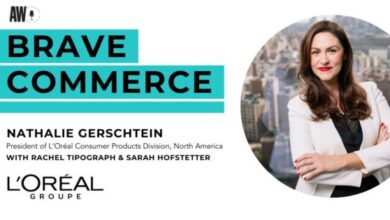
My colleague Kristie Pope, Ogilvy D.C. executive creative director, pointed out that Dove’s research found that Black women are 80% more likely than white women to agree with the statement, “I have to change my hair from its natural state to fit in at the office.” On top of that, victims of race-based hair discrimination remained unprotected by law, a fact very near and dear to both of us as Black female leaders. This sparked #BlackHairIsProfessional and The CROWN Act.
All of these insights create an opportunity, to show that various vacuums exist that brands and marketers can step into and utilize creativity to enact change.
Understand the human experiences of those affected
Data alone won’t make a campaign resonate. That’s why it’s also crucial that brands truly understand the human experience of those who bear the brunt of the injustice.
“STARs were at the center of our process from day one,” Hillman said about ‘Tear the Paper Ceiling.’ For brands and marketers, it’s crucial not only to ground a campaign by speaking with people outside your own walls but to center and empower your own people who are part of the communities being affected.
In the case of Dove, that very qualitative data point inspired the campaign #BlackHairIsProfessional, which Pope helped lead. “It’s not every day you get an opportunity to do impactful work for a community you’re a part of,” Pope said on the panel.
Too often, brands and marketers incorporate what Pope referred to as “a check-box system” where a person or two who represents the community is brought in, an approach that will lead the campaign to ultimately fail. For the work on #BlackHairIsProfessional, the personal became the campaign for Pope and other Black women who helped lead the work, as they brought their own stories to the table.
In these examples, real-world data points and insights, combined with centering the people who can bring their own personal stories to the effort, helped lead to campaigns that resonated.
That emotional, human approach underpinned the ERA Coalition’s campaign ‘WOMAN Corp.’ By putting individual women’s rights under the guise of a corporation, the campaign slyly highlights the hypocrisy of how rights are defended. With 80% of people unaware that equal rights are not enshrined in the Constitution, there was ample opportunity to reach media-savvy people of voting age, who can advocate for change through the tangible actions that the campaign suggests.
Dove’s “#BlackHairIsProfessional” campaign used side-by-side imagery of Black women’s natural hair juxtaposed with the hair they needed to change to be accepted in the work world. This again shows how putting a human face to the problem helps create that critical emotional connection when trying to inspire people to act for change.
But the real shift comes when the aim is to change policy. #BlackHairIsProfessional is part of Dove’s overall support for The CROWN Act, which seeks to make race-based hair discrimination illegal. The CROWN Act is now law in 24 U.S. states and, though it has stalled in the U.S. Senate, it was passed by the House of Representatives.




